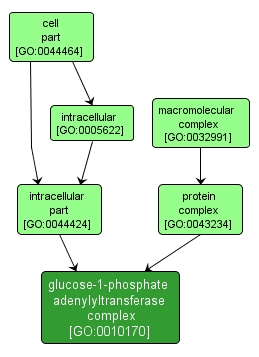| Desc: |
Complex that catalyzes the synthesis of ADP-glucose and pyrophosphate from glucose-1-phosphate and ATP. In plants, the complex is a heterotetramer composed of two types of subunits (small and large). In bacteria, the enzyme complex is composed of four identical subunits. |














